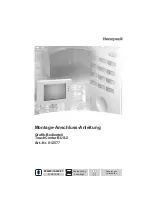
QP-10-IM21UL/Rev 12
GENERAL INSTRUCTIONS:
This installation manual contains essential information for the electrical and mechanical
installation that you must know before installation modules. This also Contains safety
information you need to be familiar with. All information described in this manual are
intellectual property and based on technologies and experiences that have been
acquired and accumulated throughout years even it is short period, but it is enough to
prepare such comprehensive report about installation. This document does not
constitute a guarantee, expressed or implied.
Philadelphia Solar does not assume responsibility and expressly disclaims liability for
loss, damage, or expanse arising out of or in any way connected with installation,
operation, use or maintenance of PV modules. No responsibility is assumed by
Philadelphia Solar for any infringement of patents or other rights of third parties that may
results from use of PV module. Philadelphia Solar reserves the right to make changes to
the product, specifications or installation manual without prior notice.
GENERAL INFORMATION
The installation of PV modules requires a great degree of skill and should only be
performed by a qualified licensed professional, including licensed contractors and
licensed electrifications. Please be aware that there is a serious risk of various types of
injury occurring during the installation including the risk of electric shock. All modules are
equipped with a permanently attached Junction box that will accept variety of wiring
applications or with a special cable assembly for ease of installation, and they do not
require special assembly.
GENERAL WARNING
1.
PV modules are heavy. Handle with care.
2.
Before you attempt to install, wire, operate and maintain the PV module, please
make sure that you completely understand the information described in this installation
manual.
3.
Contact with electrically active parts of a PV module such as terminals can result
in burns, sparks, and lethal shock whether the PV modules is connected or not.
4.
PV modules produce electricity when the enough sunlight or other sources
illuminate the module surface.
Summary of Contents for PS-M60 Series
Page 1: ...Installation...



































